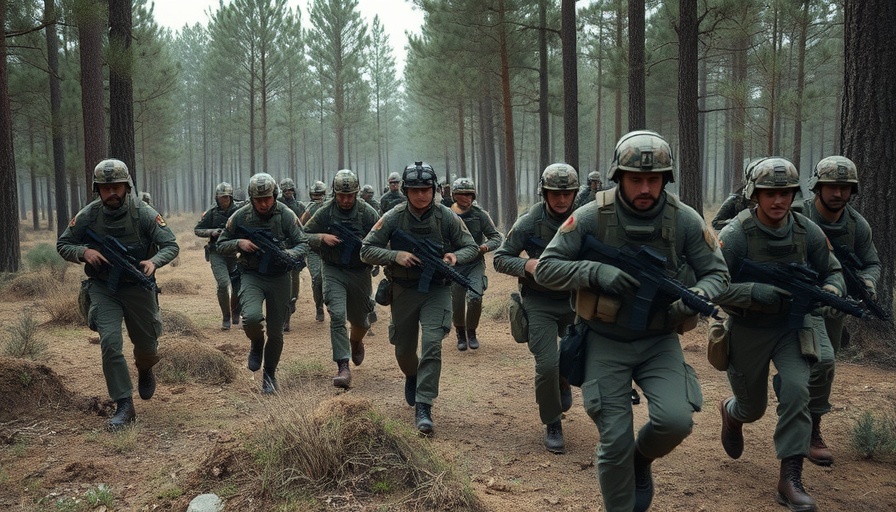
Understanding the Scale of Ukraine's Drone Offensive
On June 1, 2025, Ukraine executed a remarkable operation against Russian air bases, marking a pivotal moment in the ongoing conflict. This extensive drone strike targeted facilities across five regions of Russia, ranging from the eastern Siberian landscape to its western borders. For the first time in the war that started in February 2022, Ukrainian drones reached the Belaya air base in Irkutsk, highlighting the increasing sophistication of Ukraine's military capabilities.
The Significance of Targeting Strategic Airbases
The Olenya air base, attacked in the Murmansk region, is particularly crucial as it houses nuclear-capable aircraft. The targeting of these bases not only demonstrates Ukraine’s ability to strike deep into Russian territory but also reflects its strategy to undermine Russian aerial advantages. Each strike against these critical locations raises questions about Russia’s air defense systems' effectiveness and the implications for its military strategy moving forward.
Escalation Amid Peace Negotiations
As clashes intensify, it’s noteworthy that this rise in violence coincided with ongoing peace talks in Istanbul. Just as Ukrainian forces were launching these drone attacks, Russia retaliated with strikes on a Ukrainian military training base, resulting in the deaths of at least 12 soldiers. This dual nature of conflict—attacks coupled with negotiations—draws a complex picture of both sides vying for leverage in a war that has lasted over three years, stalling attempts at diplomatic resolution.
Comparative Analysis of Military Strategies
Looking across NATO nations and comparing military responses, the diverse strategies employed by Ukraine demonstrate a significant shift in modern warfare tactics. This has prompted many military analysts to study the potential future of military engagements, where drone warfare becomes the norm. Countries like Russia may need to reevaluate their defensive strategies to combat evolving threats, especially as non-state actors also look to emulate similar tactics.
Public Reaction and the Human Element
The impact of such large-scale military operations resonates beyond the battlefield. Citizens in both Ukraine and Russia are affected by the continuing loss of life, the fear of escalation, and the economic strains of prolonged conflict. Many Ukrainian families bear the scars of war, while Russians are faced with rising anxiety over the implications of strikes close to home. As stories of individuals caught in the crossfire emerge, the human aspect of these events becomes increasingly poignant, reminding us that behind strategic maneuvers are real lives affected by the choices made in conflict.
Future Predictions: What Lies Ahead?
The drone strikes signal a potential change in the momentum of this conflict. If Ukraine continues to successfully employ these tactics, we may see a shift in how aggressors approach military conflict in the future. International response will also play a role—future Western support will likely weave into the tactical landscape, possibly increasing military aid to enhance Ukraine’s strategic capabilities even further.
Conclusion: The Pathways to Peace
The situation remains delicate. As both sides prepare for potentially critical cease-fire negotiations, understanding the ramifications of these air strikes could pave the way for future strategies towards de-escalation. The world watches closely, as each passing day could reshape the trajectory of the war, with the lived human experience central to the conflict narrative. Engaging with this ongoing story not only stays informed on the humanitarian implications but begins to understand the broader consequences for global politics and security.
 Add Row
Add Row  Add
Add 




 Add Row
Add Row  Add
Add 

Write A Comment